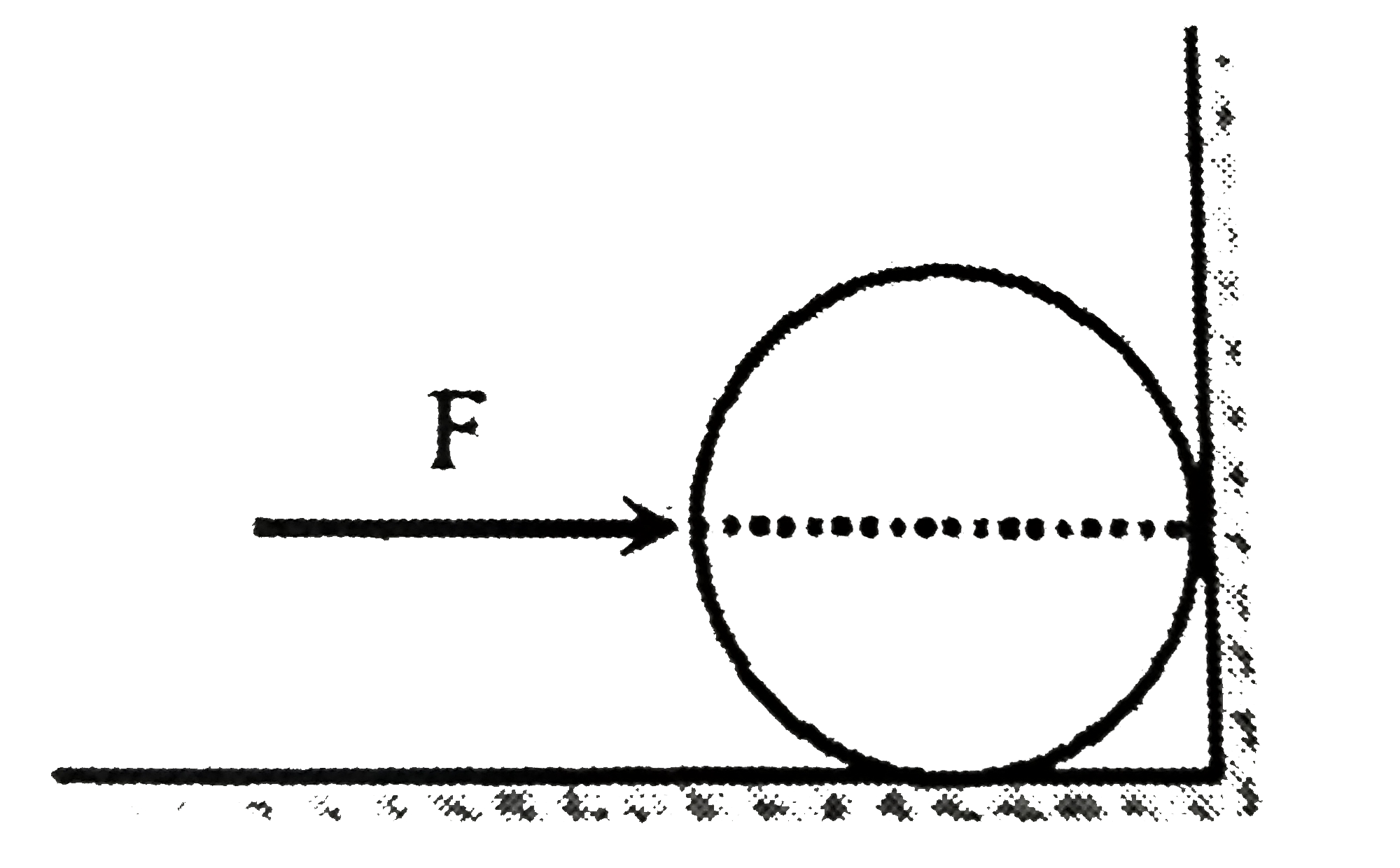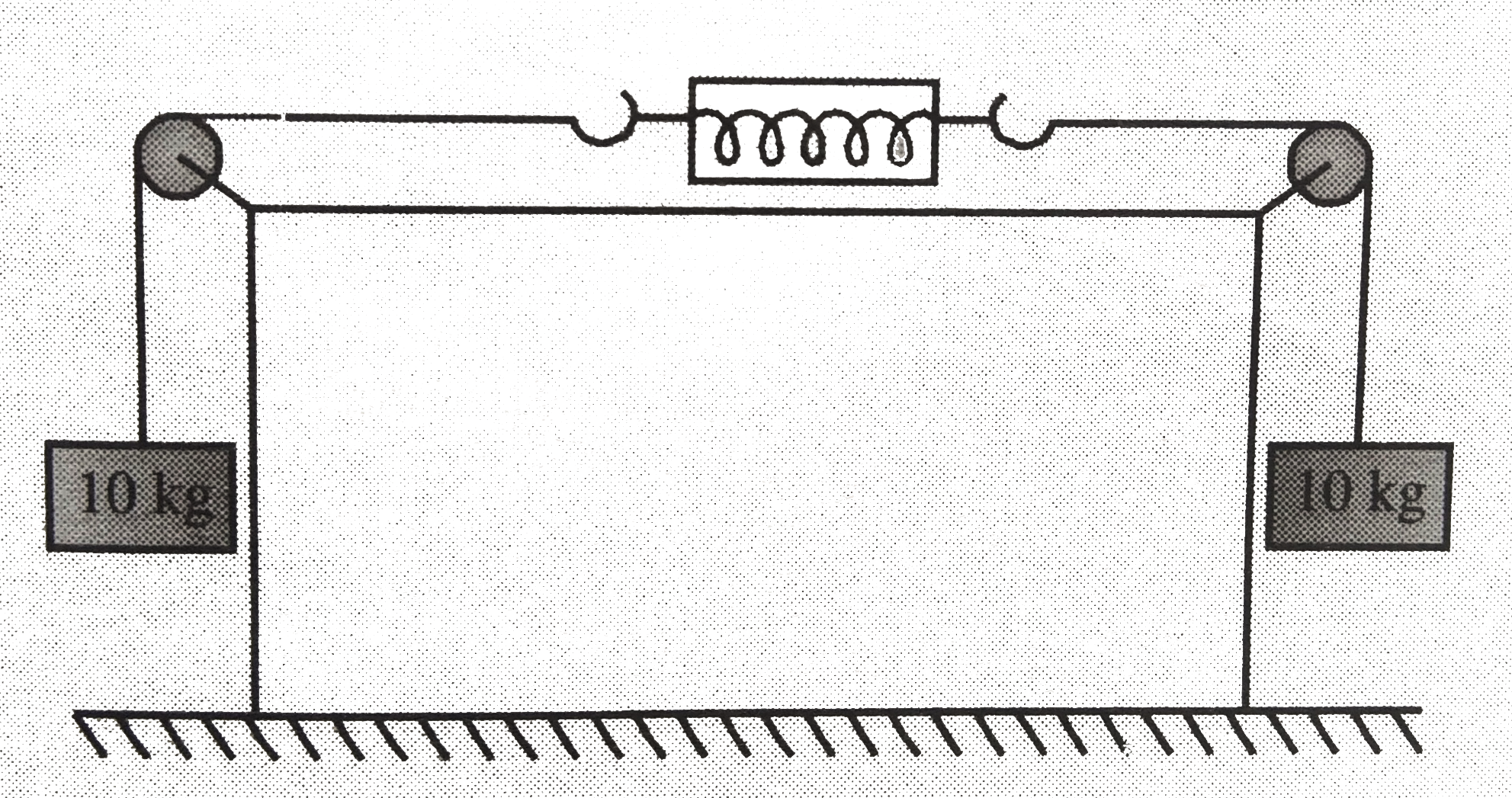A block of mass m is suspended from a fixed support with the help of a cord. Another identical cord is attached to the bottom of the block. Which of the following statement is/are true?Solution in Gujrati
If the lower cord is pulled suddenly, only the upper cord will break.
If the lower cord is pulled suddenly, only the lower cord will break.
If pull on the lower cord is inceased gradually, only the upper cord will break.
If pull on the lower cord is increased gradually, only the upper cord will break.
The correct Answer is:B, D
Step by step video & image solution for A block of mass m is suspended from a fixed support with the help of a cord. Another identical cord is attached to the bottom of the block. Which of the following statement is/are true? by Physics experts to help you in doubts & scoring excellent marks in Class 12 exams.
Updated on:21/07/2023Topper's Solved these Questions
- NEWTON'S LAWS OF MOTION & FRICTIONBook:ALLEN Chapter:NEWTON'S LAWS OF MOTION & FRICTIONExercise:EXERCISE (JM)
Explore 6 Videos
- NEWTON'S LAWS OF MOTION & FRICTIONBook:ALLEN Chapter:NEWTON'S LAWS OF MOTION & FRICTIONExercise:EXERCISE (JA)
Explore 4 Videos
- NEWTON'S LAWS OF MOTION & FRICTIONBook:ALLEN Chapter:NEWTON'S LAWS OF MOTION & FRICTIONExercise:EXERCISE (O-1)
Explore 50 Videos
- MOTION IN A PALNEBook:ALLEN Chapter:MOTION IN A PALNEExercise:SOLVED EXAMPLE
Explore 28 Videos
- NEWTONS LAWS OF MOTIONBook:ALLEN Chapter:NEWTONS LAWS OF MOTIONExercise:EXERCISE-III
Explore 28 Videos
Similar Questions
Two fixed frictionless inclined planes making an angle 30∘ and 60∘ with the vertical are shown in figure. Two blocks A and B are planes. What is the relative vertical acceleration of A with respect to B?

View SolutionA piece of wire is bent in the shape of a parabola y=kx2 (y-axis vertical) with a bead of mass m on it. The bead can slide on the wire without friction. It stays at the lowest point of the parabola when the wire is at rest. The wire is now accelerated parallel to the x-axis with a constant acceleration a. The distance of the new equilibrium position of the bead, where the bead can stay at rest with respect to the wire, from the y-axis is:
View SolutionA ball of mass m kept at the corner as shown in the figure, is acted by a horizontal force F. The correct free body diagram of ball is

View SolutionA particle thrown over a triangle from one end of a horizontal base falls on the other end of the base after grazing the vertex. If αandβ are the base angles of triangle and angle of projection is θ, then prove that (tanθ=tanα+tanβ)
View SolutionAssertion: The driver in a vechicle moving with a constant speed on a straight road is in a non-inertial frame of referance.
Reason: A reference frame in which Newton's laws of motion are applicable is non-inertial.
View Solution(a) A 10-kg block is supported by cord that runs to a spring scale, which is supported by another cord from the ceiling as shown in fig. What is the reading on the scale?

(b) In Fig. the block is supported by a cord that runs around a pulley and to a scale. The opposite end of the scale is attached by a cord to a wall. What is the reading of the scale?

(c ) In fig. the wall has been replaced with a second 10-kg block, what is the reading on the scale now?
 .
.
View SolutionA block of mass m is suspended by a rubber cord of natural length l=(mg)/(k) , where k is force constant of the cord. The block is lifted upwards so that the cord becomes just tight and then block is released suddently. Which of the following will not be true?
View SolutionA block of mass M is supported by a cord C from a rigid support, and another cord D is attached to the bottom of the block. If D is given a sudden jerk D breaks But if D is pulled steadily, cord C breaks. Why ?
View SolutionA cord is used to lower vertically a block of mass M , a distance d at a constant downward acceleration of (g)/(4) , then the work done by the cord on the block is
View SolutionA cord is used to lower vertically a block of mass M through a distance d at a constant acceleration g/4. Find the work done by the cord on the block.
View SolutionIn the figure shown, a block A of mass m is rigidy attached to a light spring of stiffness k and suspended from a fixed support. Another block B of same mass is just placed on it and blocks are in equilibrium. Suddenly the block B is removed. Choose the correct options (s) afterward.

View SolutionA heavy block of mass m is supported by a cord C attached to the ceiling, and another cord D is attached to the bottom of the block. If a sudden jerk is given to D, then
View SolutionA block of mass M is suspended by a corf A from the ceiling and another cord B is attached to the bottom of the block as shown in Which string will break if we pull the string B (a) with a sudden jerk, (b) steadily ?
View SolutionFigure 5-20 shows a block S (the sliding block) with mass M = 3.3 kg. The block is free to move along a horizontal frictionless surface and connected, by a cord that wraps over a frictionless pulley, to a second block H (the hanging block), with mass m = 2.1 kg. The cord and pulley have negligible masses compared to the blocks (they are "massless"). The hanging block H falls as the sliding block S accelerates to the right. Find (a) the acceleration of block S, (b) the acceleration of block H, and ( c ) the tension in the cord.

Figure 5.20 A block S of mass M is connected to a block H of mass m by a cord that wraps over a pulley.
View SolutionIn Fig. 5-27, a block attached to a chord is resting on an inclined plane. Let the mass of the block be 8.5 kg and the angle θ be 30∘.
(a) Find the tension in the cord and normal force acting on the block.
(b) If the cord is cut, find the magnitude of the resulting acceleration of the block.
Figure 5-27 A block attached to a chord resting on an incline.
View SolutionA block of mass 5kg is suspended by means of a uniform cord of mass 2kg attached to the roof of a lift as shown. If the lift starts accelerating up with a = 5ms−2 (and g=10ms−2). The tension at the mid-point of the cord is

View Solution